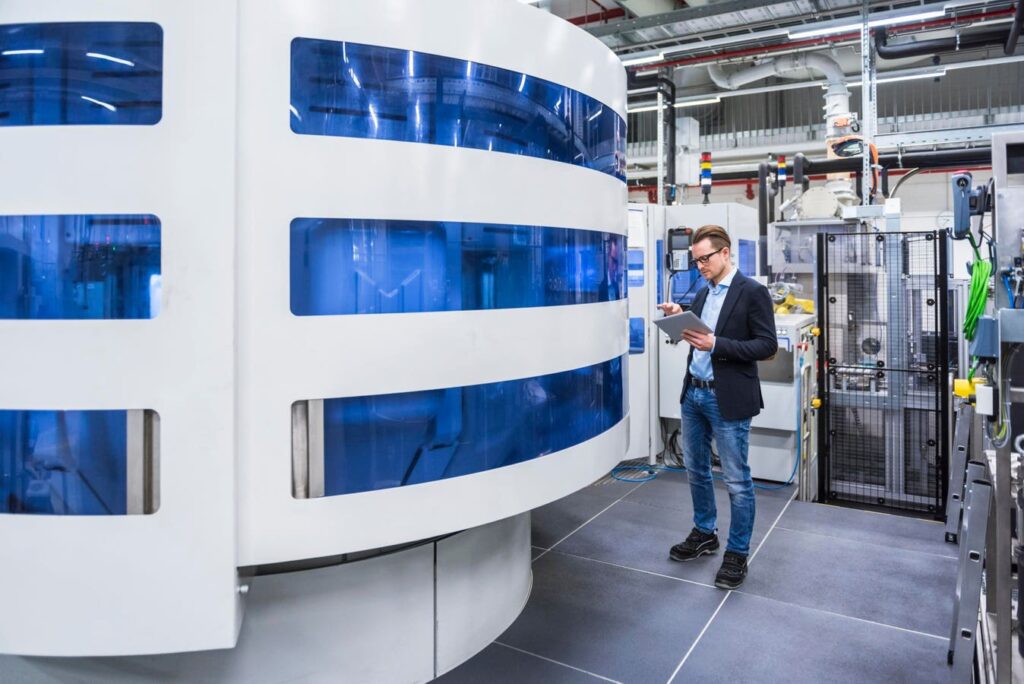Raghunandan Gurumurthy is a global industrial engineering expert and Director of North America Operations at Crossover Solutions.
A $2 million disaster is quietly averted at a sophisticated semiconductor factory. No alarm sounds. No emergency team rushes. Instead, an artificial intelligence (AI) system has already spotted the problem, ordered the parts, and scheduled the repair, all before a human can detect a problem.
Welcome to the new world of smart maintenancewhere AI is transforming one of the manufacturing industry’s biggest problems into a strategic advantage. Unplanned downtime costs U.S. manufacturers 50 billion dollars every year, this revolution could not have come at a better time.
The $50 Billion Problem
When equipment breaks down, the visible costs are just the tip of the iceberg. Hidden beneath the surface is a cascade of expenses that can sink even the most profitable operations. Whether it’s scrapped materials, overtime, lost customers, or demoralized employees, I’ve found that the true cost of downtime is typically four to fifteen times higher than what it costs. most leaders think.
Consider the often overlooked impacts on raw material waste, labor costs, supply chain disruptions, quality issues, customer relations, employee morale, risks to safety and energy waste.
A report from Information Technology Intelligence Consulting Research found that 98% of organizations report that a single hour of downtime costs more than $100,000. For 33% of companies, this hourly cost exceeds $1 million. These numbers make traditional maintenance approaches, heavily dependent on fixed schedules and reactive repairs, increasingly unviable in today’s competitive landscape.
The AI Advantage: A Significant Change in Asset Management
Through my work with dozens of manufacturing plants across various industries, I have observed three key ways in which AI is transforming this landscape:
1. Predictive maintenance
AI algorithms have revolutionized our ability to predict equipment failures by analyzing large amounts of sensor data. This goes beyond simple trend analysis: modern AI systems can identify complex, multivariable patterns that traditional methods miss.
By integrating data from multiple sources such as vibration sensors, oil analyses, thermal images and historical maintenance records, these systems can detect subtle correlations that indicate impending failures. The real power lies in AI’s ability to continually learn and adapt its predictions based on new data and results.
2. Real-time monitoring
Today’s AI systems process millions of data points per second across production facilities, providing a level of monitoring that would be impossible for human operators alone. These systems combine multiple AI technologies, from computer vision analyzing production line images to deep learning models processing sensor data, to create a comprehensive understanding of facility operations.
By correlating visual signals with sensor data, AI can identify potential problems hours or even days before they become apparent through traditional monitoring methods.
3. Automated decision support
Modern AI doesn’t just detect problems; it provides sophisticated decision support to maintenance teams. These systems can analyze complex scenarios involving multiple variables such as equipment condition, maintenance history and operational constraints.
AI evaluates potential intervention strategies, taking into account factors such as resource availability and production schedules, to recommend optimal maintenance approaches. This capability transforms maintenance from a reactive necessity into a strategic operation that balances multiple business objectives.
The true value of these AI capabilities lies not in a single feature, but in how they work together to create a smarter, more proactive maintenance environment. When implemented correctly, these systems augment human expertise rather than replacing it, allowing maintenance teams to make more informed decisions and act more efficiently.
Implementation challenges and future prospects
What makes this approach particularly powerful is its ability to learn and improve over time. As these systems collect more data and experiment with more scenarios, their predictive accuracy and decision support capabilities should continue to improve maintenance operations.
But while AI promises transformative benefits for industrial maintenance, its successful implementation requires a careful approach to key challenges.
Data quality is the main obstacle; Facilities must establish robust data collection infrastructures and governance policies before AI can provide meaningful insights. Integration complexity presents another significant challenge, with most implementations requiring 12 to 24 months for full deployment. Perhaps most importantly, cultural resistance often determines success or failure, making early stakeholder involvement and comprehensive training essential.
Looking ahead, alongside AI, I foresee three key technologies that will reshape industrial maintenance. Edge computing enables near-instantaneous equipment monitoring and response, while digital twins provide a virtual testing ground for maintenance strategies before they are implemented in the real world. Finally, augmented reality is transforming the way maintenance teams operate, by superimposing AI information directly on physical equipment.
Action Steps for Leaders
Successful integration of AI-based maintenance solutions relies on building a solid foundation through three critical steps:
1. Assess your readiness.
• Audit current maintenance costs and downtime impacts.
• Assess existing data collection capabilities.
• Examine the technical skills of the workforce.
2. Start small and scale smart.
• Start with a pilot program on critical equipment.
• Document ROI metrics beyond cost savings.
• Develop internal champions among maintenance staff.
3. Plan for success.
• Develop clear data governance policies.
• Create comprehensive training programs.
• Partner with proven AI providers.
Conclusion
The key to success lies in understanding that implementing AI is not just a technical upgrade: it is a transformation journey affecting every aspect of operations. Organizations that effectively combine AI capabilities with human expertise while remaining focused on technological and cultural elements will find themselves at a significant advantage.
The future of industrial maintenance belongs to those who successfully merge human knowledge and AI capabilities, creating more resilient and efficient operations.
Forbes Business Advice is the leading growth and networking organization for business owners and leaders. Am I eligible?


